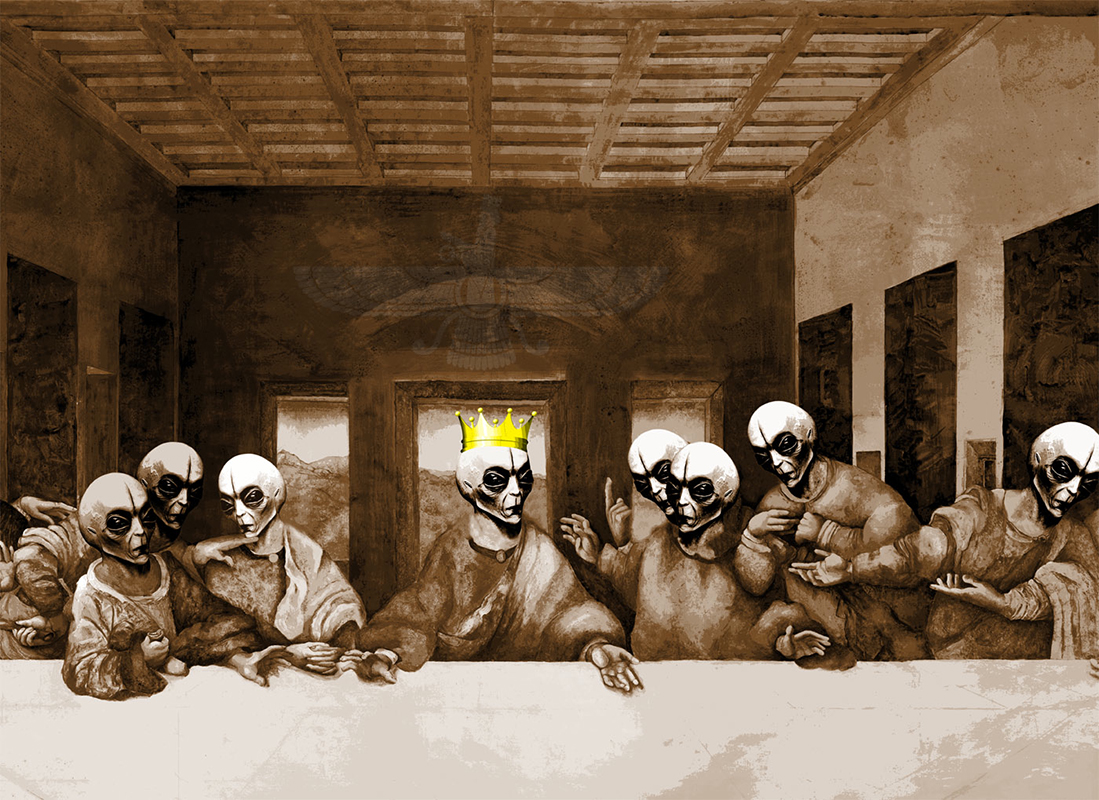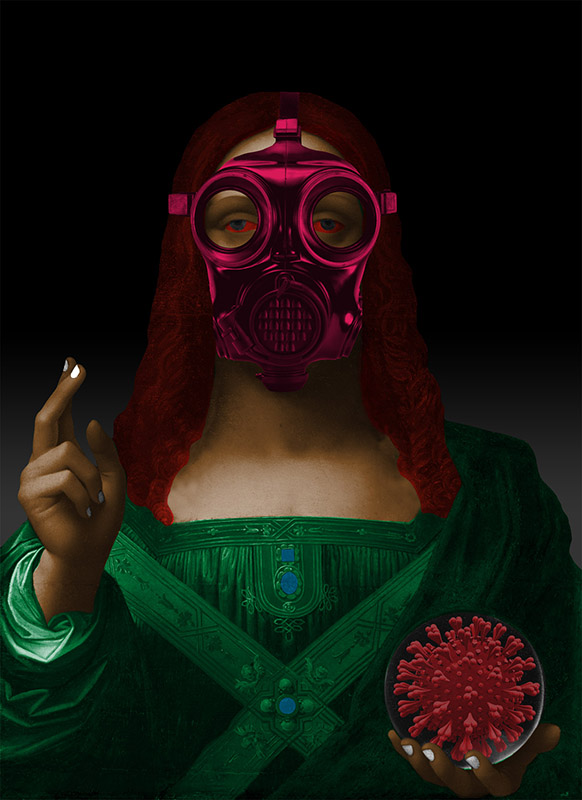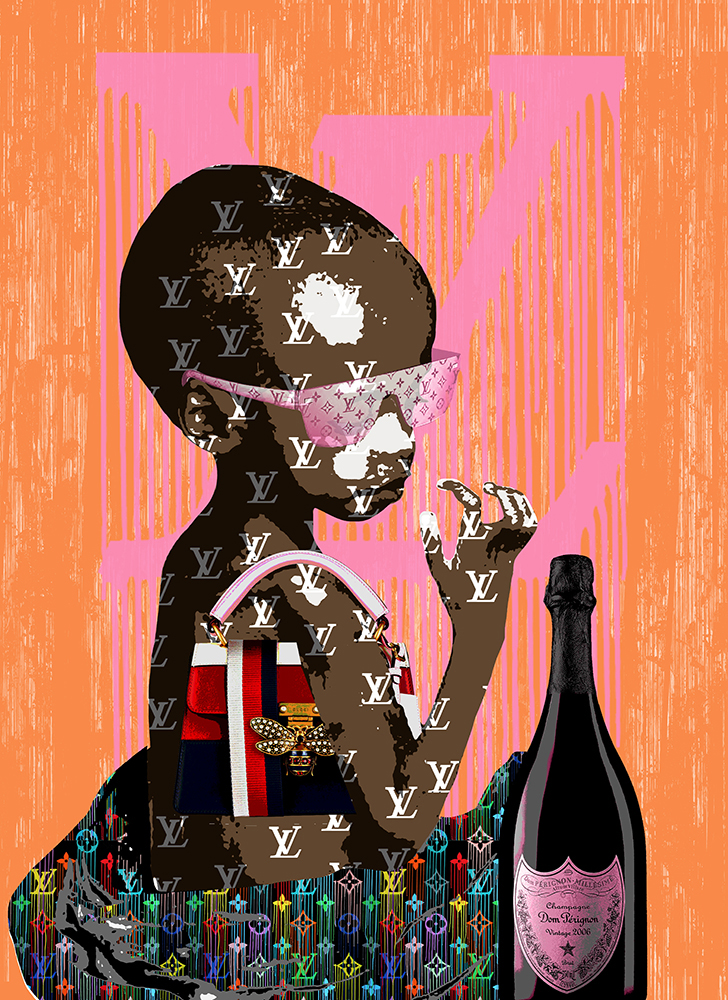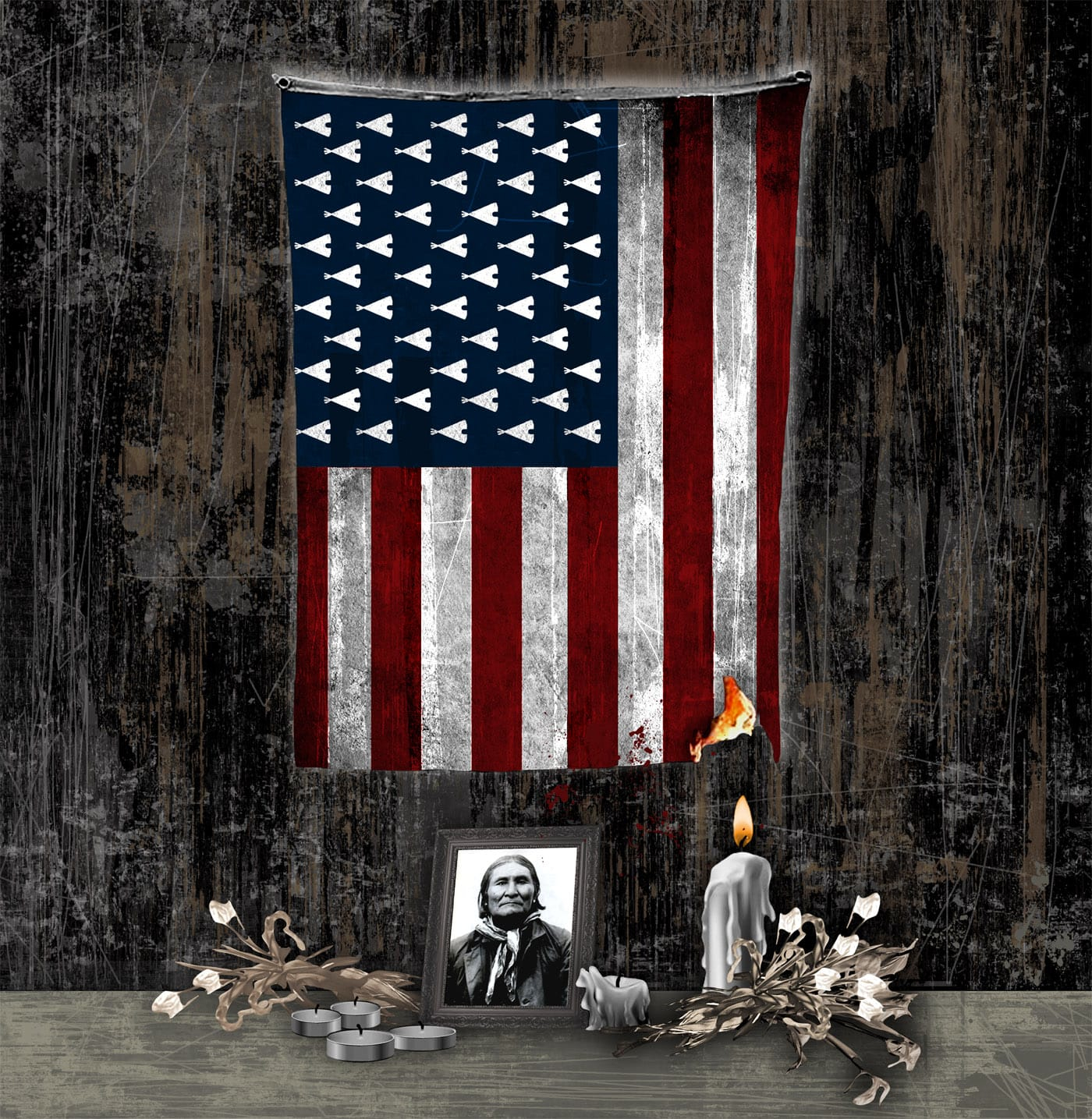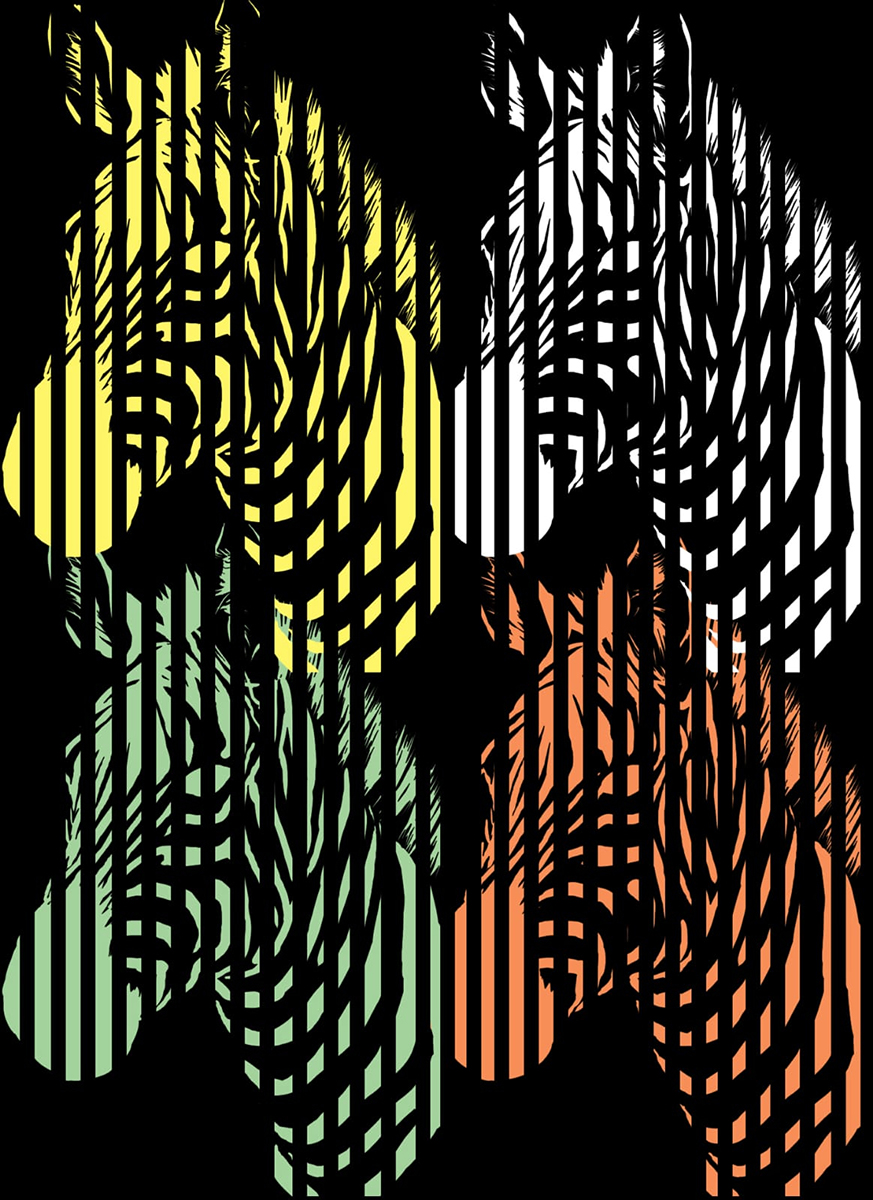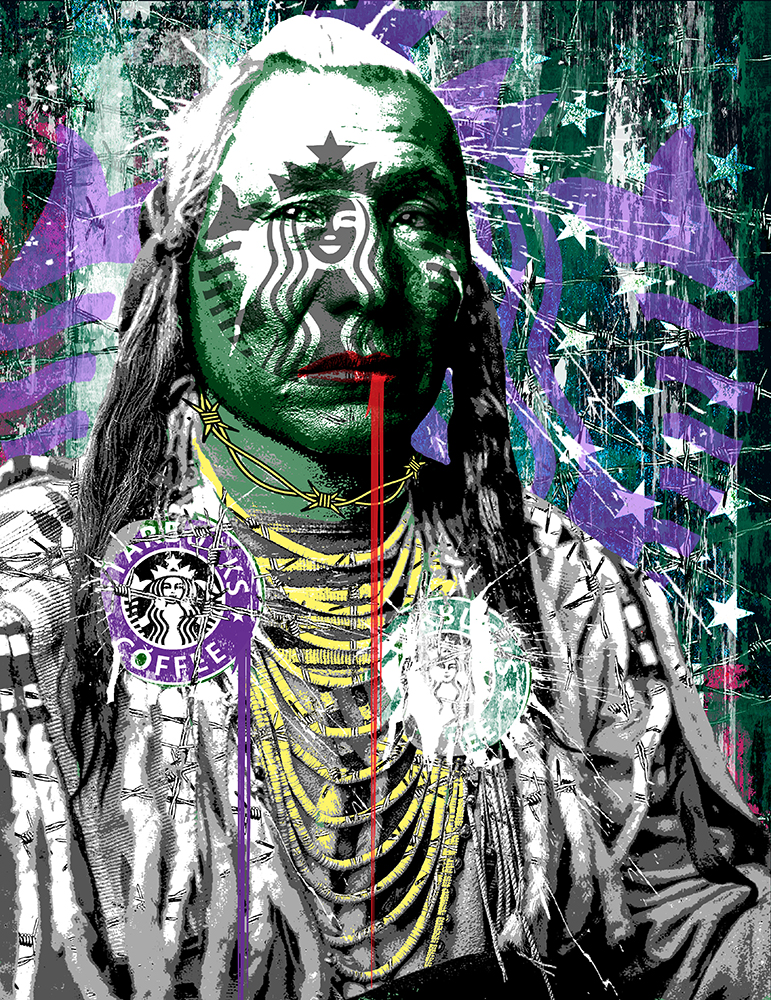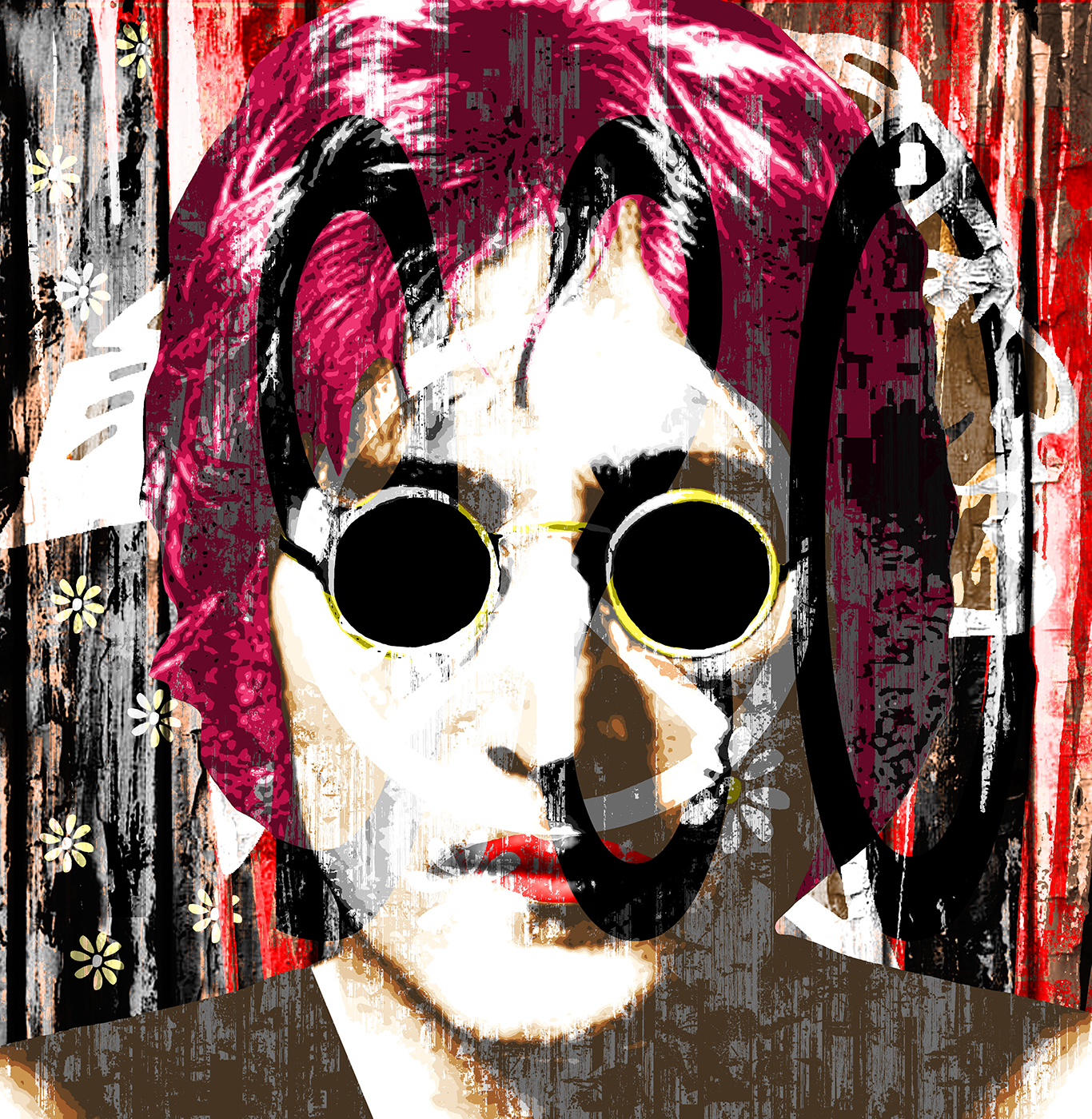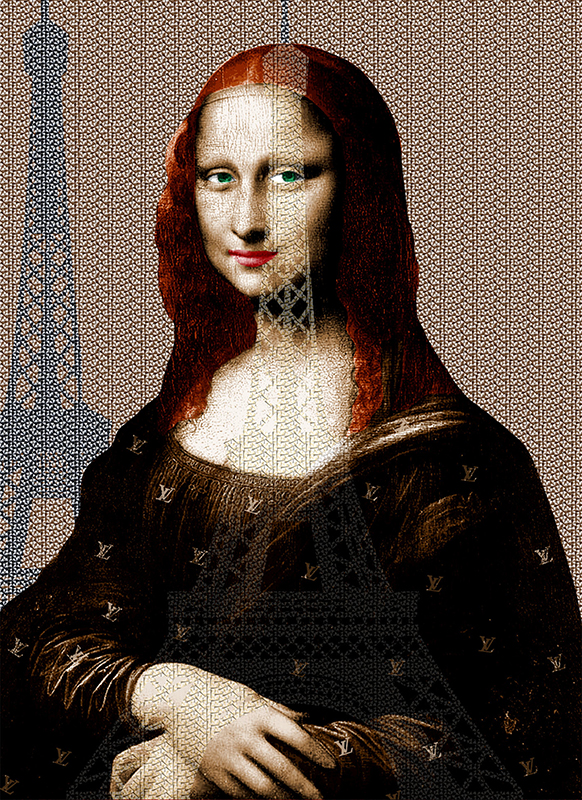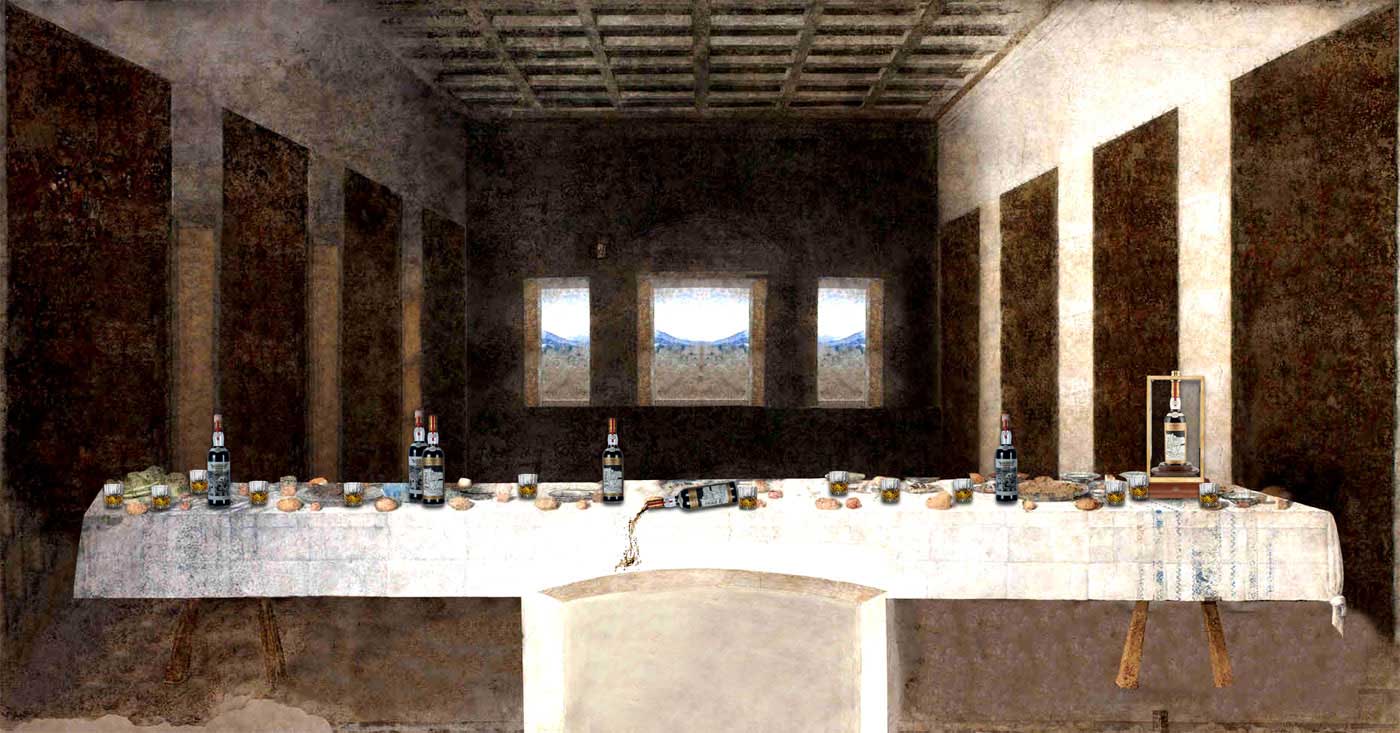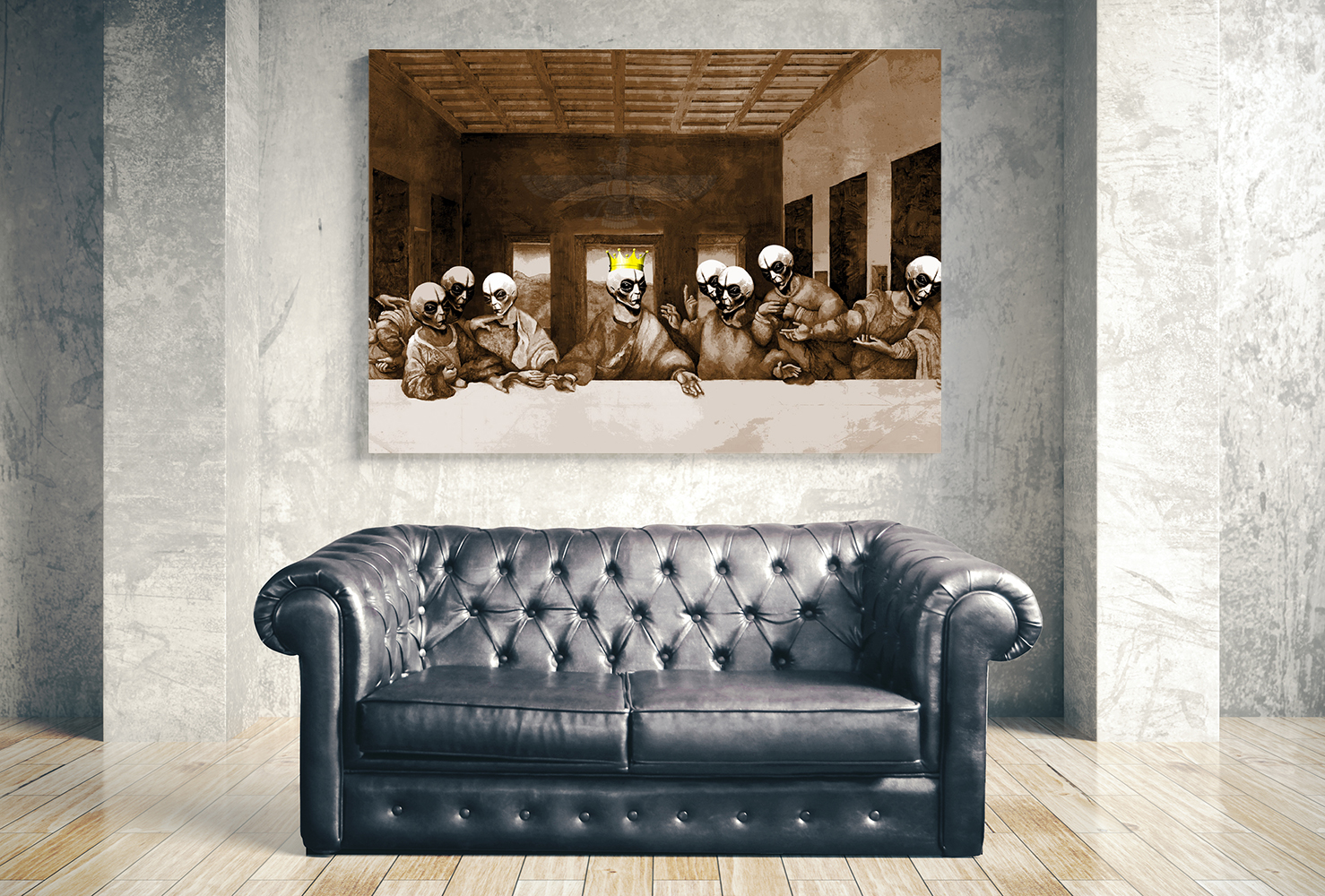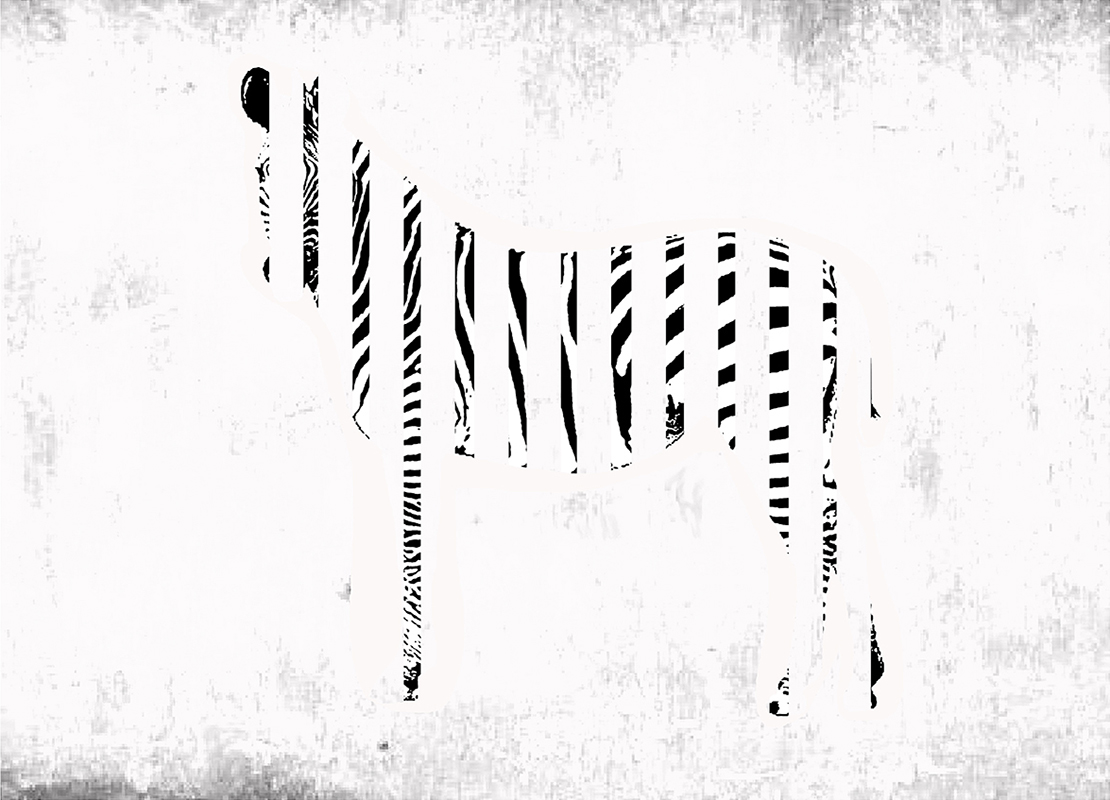AL alias DENKSTAHL is an autodidact artist. While three decades ago his work was strongly influenced by abstract and action painting, he now has adopted digital art as his chosen profession and expression. Digital visual art has its origins in socially critical comics and caricatures, but above all, in graphic advertising, especially booming in recent decades. He thus represents a relatively young art form that tends to be ridiculed by critics. In contrast to that, there are also those advocates of digital art who see this art form as a necessary development and consequence of digitization. Digital art is currently experiencing a lot of hype in different versions due to so-called crypto art. Just recently, a crypto work of art by the American digital artist Beeple, a collage of 5000 images, was auctioned for 69 million euros at Christie’s in New York.
DENKSTAHL is an artist who impresses, provokes and irritates. He is socially critical and does not follow the current mainstream of artistic creation. He questions current social and political issues as well as the repertoire of representation as we know it from classical art history as such. Recurring symbols in his oeuvre are traditional representation schemes, such as excerpts from scenes of the Crucifixion; Da Vinci’s The Last Supper, Michelangelo’s The Creation of David from the Sistine Chapel or other scenes by well-known history and genre painters, to name a few. He modifies these for his work and gives them his personal stamp and his personal note. His art was never intended to just please, but to stimulate thought and initiate reflection.
DENKSTAHL’s works are peppered with details that pull the viewer under their spell and often only unfold in their depth at second glance. This addressed can be very direct and shocking, or subtle and reserved. If you look at his oeuvre, it is noticeable that all of his works aim for a long-distance effect. In their large-format they come across as colourful, and only reveal the details that characterize them when viewed close-up. One can easily lose oneself it these.
Many From Beyond Our World by DENKSTAHL
Digital Art – Unique Piece, 170×125 cm
The artist characteristically mixes archaic symbols and modern brand logos in his digital work. Well-known car brands, textile and fashion labels, coffee brands and social media brands are among the main components of his works, but they are not always noticeable at first glance. His portraits of Natives, which are part of a comprehensive series of portraits of well-known personalities, are eloquent examples of this.
This series, branded as HEADS, portrays well-known US politicians standing alongside pop and music idols such as John Lennon or Marilyn Monroe. Held in bright, strong colors and strong contrasts, the Natives’ portraits have a magnetic attraction that guides and catches the eye. Here, Native Americans are not only presented in a new light, but the viewer themself is also clearly criticized.
Almost too discreet and hidden yet still emblazoned on the chest of an Indian is the logo of the most famous coffee chain in the world – Starbucks. Is it an analogy that the coffee giant is displacing the small shops just as the »white man« displaced the natives? Possible – but DENKSTAHL incites and encourages looking, tempts the viewer to think about it without propagating a certain direction or opinion. The brand logo of the coffee giant, but also numerous others, are omnipresent symbols in our everyday lives. Just think of the logos of Apple, Google or fashion labels like Prada, Louis Vuitton, Chanel. The artist places them in a new, different context within his pictures and confronts the viewer, stimulating them to reflect on what has become customary.
With all the rebellion we encounter in DENKSTAHL’s work, he is still heavily influenced by the history of art. Bonds that are familiar to the observer from classical art history can be found again and again. His references range from portrait and genre painting of the Renaissance and Dutch landscape painting to surrealism and abstraction. It is this combination of well-known pictorial traditions, splendor of colors, strong contrasts and impulses given by symbols and logos that characterizes DENKSTAHL’s work and catches the viewer’s eye.
The Most Expensive Virus Of All Times by DENKSTAHL
Digital Art – Unique Piece, 120×160 cm
A special and very impressive example is his work The Most Expensive Virus of All Time, a portrait of a special kind. Its basis is Leonardo da Vinci’s work Salvator Mundi, which is said to have been created around 1500 and has caused quite a stir in the art world in the recent years. The provenance of this masterpiece by the universal genius Da Vinci is incomplete, and despite latest investigations, experts still do not agree on whether it is an independent work by Leonardo or workshop art. Despite these uncertainties, the painting achieved a record amount of 450.3 million US dollars at the auction in 2017 at Christie’s auction house in New York, making it the most expensive painting ever to be auctioned.
In DENKSTAHL’s interpretation of the work, the basic form with its portrait character is retained, but is changed through massive interventions in the motif. These are already evident at first glance and confront the viewer with the current situation regarding the covid pandemic. Even Christ – here with bloodshot eyes – does not seem to be immune from the virus. The large pink gas mask is already noticeable from afar and stands out against the otherwise dark background. Other bright accents, and thus points of attraction that direct the eye, are the strong white fingernails, which remind you of nail polish. With his right hand raised in a gesture of blessing, he holds a greatly enlarged red virus cell in a glass ball in his left. A look into our future? While in Da Vinci’s original the glass ball is a symbol of Christ’s rule over the world, its original meaning is reversed here and can be interpreted as an indication of the virus’s rule over the world.
Further differences only become apparent on closer inspection and a comparison with the original Da Vinci. Instead of a light blue robe as a symbol of purity, holiness and loyalty, he wears a green robe decorated with blue precious stones. Green is traditionally considered gentle, calming, healthy and is equated with hope. Blue and green contrast with the color red – purity and hope vs. danger and warning.
In addition to these motivic and iconographic changes, DENKSTAHL also plays with the title. The Most Expensive Virus Of All Time refers to the record amount that was achieved at the auction and the title as »the most expensive painting in the world«, which has since been associated with the original, but can also be used as a contemporary testimony to the current pandemic situation. Especially those not yet foreseeable (economic) consequences are alluded here.
The late medieval image type of a blessing, Christ as the savior of humanity and the healer of the world, is exaggerated and caricatured in DENKSTAHL’s work. Again, art does not have to be just pleasing, you have to deal with it.
In addition to this, there are other works in DENKSTAHL’s oeuvre that go back to the Renaissance artist Da Vinci. In addition to the Mona Lisa, which the artist puts into a Louis Vuitton robe and stylizes the Eiffel Tower as a silhouette in the background as a prestige object for France, he dedicates two works to the well-known work The Last Supper. In the variant, Many From Beyond Our World, he focuses on the group of people gathered around the table and replaces the heads of Christ and his disciples with the widespread appearances of extraterrestrials that have appeared again and again in the media since the 1960s.
The Final Evening by DENKSTAHL
Digital Art – Unique Piece, 170×110 cm
The Final Evening, on the other hand, which in terms of the title and the spatial circumstances creates a clear similarity to Da Vinci’s fresco, completely dispenses with the figurative aspect. Here the set, but abandoned table is the focus of interest, which he composes into a new whole by adding filled whiskey glasses and the bottles that go with them. These whiskey bottles are particular and among the most expensive in the world; it is a 1926 Macallan. The labels for 12 bottles of this whiskey were designed by the Italian artist Valerio Adami and for 12 others by the British artist Sir Peter Blake and traded for € 1,034,000 and € 954,000. A parallel between the work of art and spirit and the meanings associated with them for the respective time is evident.
The works discussed in this article belong to the series TRIBUTE TO, in which DENKSTAHL various artists from art history such as Leonardo da Vinci and Pablo Picasso, Vincent Van Gogh, Marc Chagall, Edward Hopper, but also Banksy, to name just a few, allows their say. Also their influences and inspirations on himself as an artist become visible. He adapts the individual motifs and lets them appear in a new context. DENKSTAHL art criticizes, challenges the viewer and addresses current issues of our time, while it adapts art historical influences and models.
Dr. Stephanie Schoger
Art Historian
Translated by Sequana Birkel

For thinking, rethinking, thinking ahead
»No picture on its own may honestly bespeak, what …
»Humanity or the art of being human
»Just imagine we would only be heads – HEADS I
»Digit-AL Streetart – Street Art meets Digital Art

For thinking, rethinking, thinking ahead
»No picture on its own may honestly bespeak, what …
»Humanity or the art of being human
»Just imagine we would only be heads – HEADS I
»Digit-AL Streetart – Street Art meets Digital Art
The pictures presented in our art blog are purchasable as DENKSTAHL UNIQUE PIECES, if they are still available.
A unique piece is a high-gloss print with pigmented ink on high-quality photo paper, laminated behind acrylic glass and reinforced by an aluminum back. Each unique piece is stamped with an artist’s stamp. For each artwork you will receive a certificate of authenticity signed by the artist and the biographical art book DENKSTAHL. art of a rebellious mind, which will be dedicated to you.
If you have any questions or are interested in an artwork, please send us your inquiry via e-mail to denkstahl@vollherzig.de. You can also arrange your individual appointment directly by phone: +49 1772851804.

